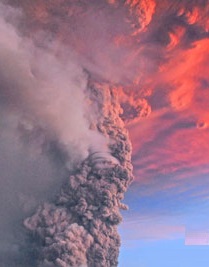Measurements made for Gambier's big bang
 A new study has determined how big an eruption occurred last time Mount Gambier blew its lid, and how bad it might be if the Australian volcano fired off again.
A new study has determined how big an eruption occurred last time Mount Gambier blew its lid, and how bad it might be if the Australian volcano fired off again.
Researchers have used advanced modelling and the latest thermodynamic research to ascertain the size and magnitude of the last Mount Gambier eruption around 5,000 year ago.
A team from Monash University’s Volcanology Research Group (MONVOLC) used 3D geometric data for their investigations, which are now published in the Bulletin of Volcanology.
It is the first time such an in-depth check of the magnitude and size of a volcano on Australian mainland has been conducted. The study was based on a range of parameters including; volume estimates of the volcanic deposits and modelling of the volcanic plume, ash-dispersal and thermodynamics.
The team estimated Australia’s most recently active volcano registered as a size four eruption on the Volcanic Explosivity Index (VEI) – about the same as the Eyjafjallajökull, Iceland eruption in 2010, which caused global chaos.
Comparing the fallout from the Icelandic eruption to the predictions from Mount Gambier, researcher Dr Jozua van Otterloo says Australia would face a true disaster if it was to blow.
An eruption would cause closure of the major airspace of eastern Australia, health risks from fine ash composed of glass fragments, destruction of crops and impacts on livestock up to 100 kilometres from the initial site.
“Little is known about the magnitude of eruptions from this volcanic province [the Newer Volcanics] that stretches around 400 kilometres between Melbourne and Mount Gambier. It has over 400 eruption centres and has been active for at least 4 to 5 million years,” Dr van Otterloo said.
“Normally the size and magnitude of eruptions of active volcanoes are determined based on observations during these eruptions. Using 3D geometrical modelling, we’ve shown it is also possible to obtain volume estimates for different deposits of a prehistoric, monogenetic volcanic centre.
“When and where the next eruption will occur is unknown. That is why our team continues undertaking extensive research in the area. Although statistics tell us it could be a long time before the next eruption, the main hazard is that when it does, we will only have a few days warning,” he said.








 Print
Print